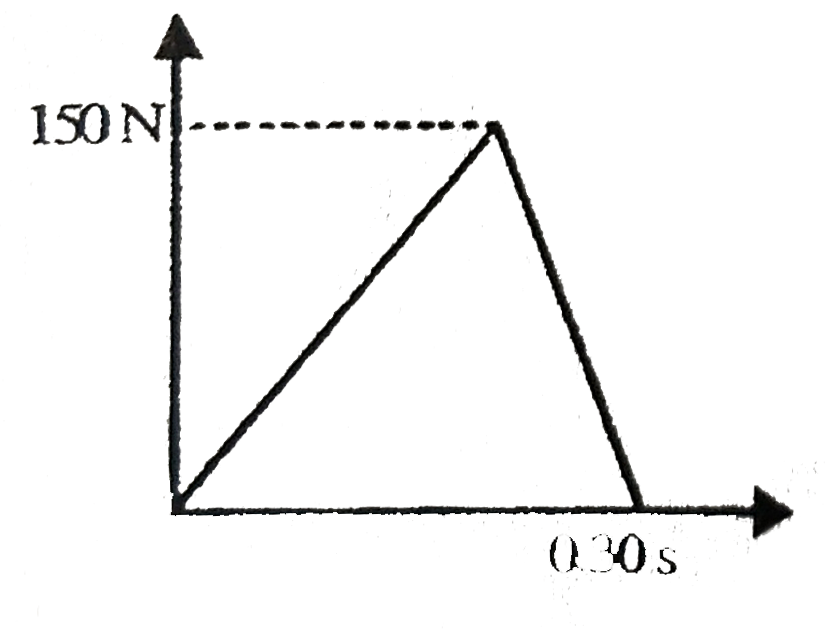A glow worm of mass 5.0 g emits red light (650-nm) with power of 0.10 W entirely in the backward direction. What velocity (v) in m/sec, will it have accelerated to after 10 years, if released in free space (and assumed to live). Report the answer as (v/7).
The correct Answer is:3
Topper's Solved these Questions
- ATOMIC STRUCTUREBOOK - FIITJEECHAPTER - ATOMIC STRUCTUREEXERCISE - ILLUSTRATION 1.
30 Videos
- ATOMIC STRUCTUREBOOK - FIITJEECHAPTER - ATOMIC STRUCTUREEXERCISE - MORE THAN ONE CORRECT OPTION
30 Videos
- ATOMIC STRUCTUREBOOK - FIITJEECHAPTER - ATOMIC STRUCTUREEXERCISE - MATRIX MATCH TYPE QUESTIONS
17 Videos
- ALKYL AND ARYL HALIDESBOOK - FIITJEECHAPTER - ALKYL AND ARYL HALIDESEXERCISE - NUMERICAL BASED QUESTIONS
1 Videos
- CARBOHYDRATES, AMINO ACIDS, POLYMERS AND PRACTICAL ORGANIC CHEMISTRYBOOK - FIITJEECHAPTER - CARBOHYDRATES, AMINO ACIDS, POLYMERS AND PRACTICAL ORGANIC CHEMISTRYEXERCISE - EXERCISE
4 Videos
Similar Questions
A glow-worm of mass 5.0g emits red light (650nm) with a power of 0.10w. Entirely in the backward direction. To what speed will it have accelerated sfter 10y if released into free space and assumed to live?
View SolutionA small hoop of mass m is given an initial velocity of magnitude v0 on the horizontal circular ring of radius 'r'. If the coefficient of kinetic friction is μk the tangential acceleration of the hoop immediately after is release is ( assume the horizontal ring to be fixed and not in contact with any supporting surface )

View Solution
Knowledge Check
A glow-worm of mass 5.0g emits red light (650nm) with a power of 0.10w. Entirely in the backward direction. To what speed will it have accelerated sfter 10y if released into free space and assumed to live?
A21ms−1B29ms−1C31.8ms−1D0.08ms−1A small hoop of mass m is given an initial velocity of magnitude v0 on the horizontal circular ring of radius 'r'. If the coefficient of kinetic friction is μk the tangential acceleration of the hoop immediately after is release is ( assume the horizontal ring to be fixed and not in contact with any supporting surface )
 AμkgBμkv20rCμk√g2+v2rDμk√g2+v0r2
AμkgBμkv20rCμk√g2+v2rDμk√g2+v0r2The velocity of a body at time t=0 is 10√2m/s in the north-east direction and it is moving with an acceleration of 2m/s directed towards the south. The magnitude and direction of the velocity of the body after 5 sec will be
A10m/s, towards eastB10m/s,towards northC10m/s, towards southD10m/s, towards north-east
A particle of mass m=0.1kg and having positive charge q=75μC is suspended from a point by a thread of length l=10cm. In the space, a uniform horizontal electric field E=104NC−1 exists. The particle is drawn aside so that the thread becomes vertical and then it is projected horizontally with velocity v such that the particle starts to move along a circle with the same constant speed V. Calculate the radius of the circle and speed v(g=10ms−2).
View SolutionA particle of mass m=0.1kg and having positive charge q=75μC is suspended from a point by a thread of length l=10cm. In the space, a uniform horizontal electric field E=104NC−1 exists. The particle is drawn aside so that the thread becomes vertical and then it is projected horizontally with velocity v such that the particle starts to move along a circle with the same constant speed V. Calculate the radius of the circle and speed v(g=10ms−2).
View SolutionTwo bodies A and B of masses 5.00 kg and 10.0 kg respectively moving in opposite directions with velocities 4.00 m/s and 0.50 m/s respectively make head-on collision in free space. The force of their mutual interaction varies according to the given graph. Select incorrect statement.

View SolutionTwo bodeis A and B of masses 5.00 kg and 10.0 kg respectively moving in opposite directions with velocities 4.00 m/s and 0.50 m/s respectively make head-on collision in free space. The force of their mutual interaction varies according to the given graph. Select incorrect statement.

View SolutionA point moves along a circle with velocity v = at where a 0.5 m/sec2. Then the total acceleration of the point at the moment when it covered (1/10) th of the circle after beginning of motion -
View Solution
